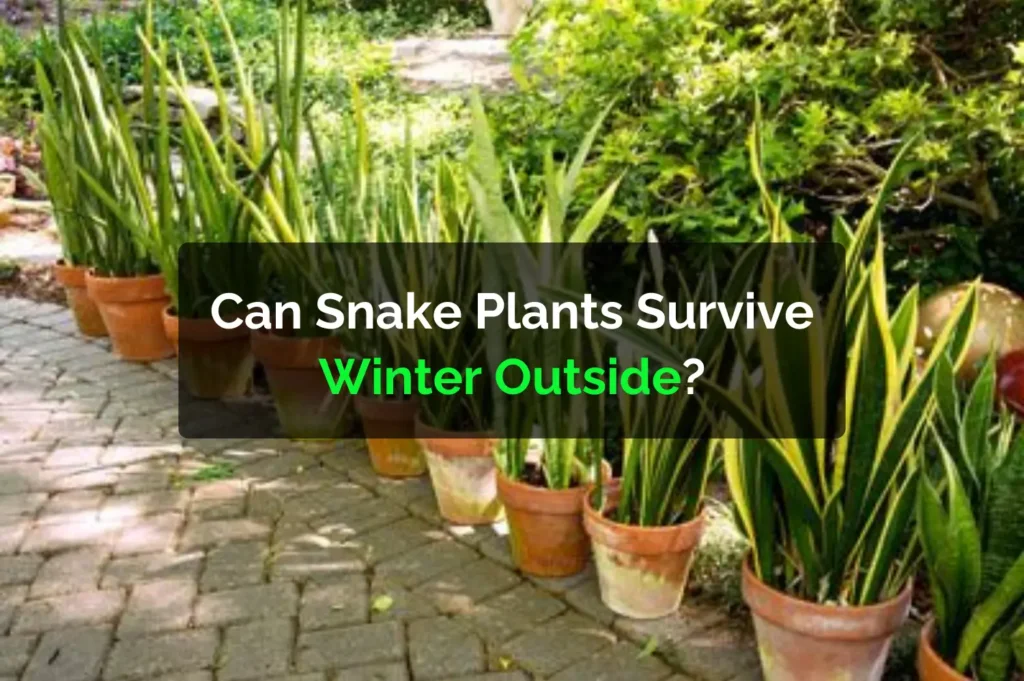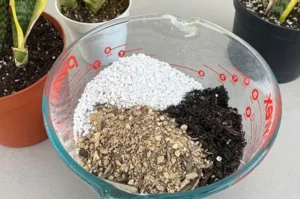Snake plants, also called Sansevieria or Mother-in-law’s tongue, are among the most loved indoor plants. They’re strong, easy to grow, and do well in low light, which makes them ideal for beginners and busy people. But when winter arrives and temperatures drop, a common question arises: Can snake plants stay outside during winter?
Let’s take a look at how winter affects snake plants and how to keep them safe in cold weather.
What You Should Know About Snake Plants
Here are some quick facts about snake plants before we focus on their winter care:
- They originally grow in tropical parts of West Africa
- Prefer warm, dry environments
- Can grow in low light but prefer indirect sunlight
- Have thick, upright leaves that store water
These features make them great houseplants, but also show that cold weather can be risky for them.
What Temperature Do Snake Plants Like?
Snake plants grow best when temperatures range from 60°F to 85°F (15°C to 29°C). They begin to suffer when they drop below 50°F (10°C). If they go below freezing, they may get damaged or even die.
That’s because snake plants can’t survive frost. Cold air causes their leaves to freeze, turn soft, or change color. Once the inside of the leaves freezes, the plant’s cells break down, and the leaves may collapse.
How Cold Weather Affects Snake Plants
If a snake plant is left outdoors in cold weather, here’s what could happen:
- Frost burns the leaves, turning them brown or black
- Leaves may become mushy or soft and collapse
- Growth slows down or completely stops
- Roots may rot in wet, cold soil
- If it stays too cold for too long, the plant could die
Are Snake Plants Safe Outside in Mild Winter?
If you live somewhere where temperatures never drop below 50°F (10°C), your snake plant may survive the winter outside. Warm-weather places like southern Florida or some coastal regions of California are examples.
Still, even in these areas, unexpected cold nights or chilly winds can harm the plant. It’s always best to stay cautious.
Tips to Help Snake Plants Survive the Cold Outdoors
If you’re keeping your plant outside during winter, here’s how to protect it:
1. Keep It in a Pot
Growing your snake plant in a pot makes it easier to bring inside if the weather gets too cold.
2. Place It in a Protected Area
Keep it near a wall, under a patio, or in another spot that blocks cold winds and frost.
3. Cover the Plant on Cold Nights
Use cloth, burlap, or even a light blanket to gently cover the plant at night when it’s cold. This adds some protection from freezing temperatures.
4. Water Less Often
Snake plants grow slowly in winter. Let the soil dry out fully between waterings, this might take 3 to 4 weeks. Too much water in cold soil can lead to root rot.
5. Skip Fertilizer in Winter
Don’t feed your plant during the cold season. It doesn’t need extra nutrients while it’s not actively growing. Feeding can encourage weak growth that’s more sensitive to cold.
What to Do If Your Snake Plant Gets Frost Damage
If your plant has already been affected by cold weather, here’s what to do:
- Remove any damaged leaves by cutting them off with clean scissors
- Check the roots and cut away any black or soft parts
- Let the plant dry and move it to a warm spot with indirect light
- Give it time to recover — sometimes snake plants bounce back slowly after being stressed
The Best Option: Bring It Indoors
The safest choice is to bring your snake plant inside when the weather gets cold. Place it near a window with filtered sunlight and keep it away from cold drafts or direct heat.
As long as the indoor temperature stays above 60°F (15°C), your plant will stay healthy through the winter.
Final Words
So, can snake plants live outside in winter? Only in places where it doesn’t get cold or frost. In most areas, the answer is no — freezing weather can harm or kill them.
To keep your snake plant safe and healthy all year, move it indoors during the cold season, avoid overwatering, and wait until spring to feed it again.
With the right care, your snake plant can continue to grow and look great, even when it’s chilly outside.






